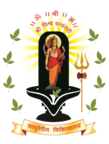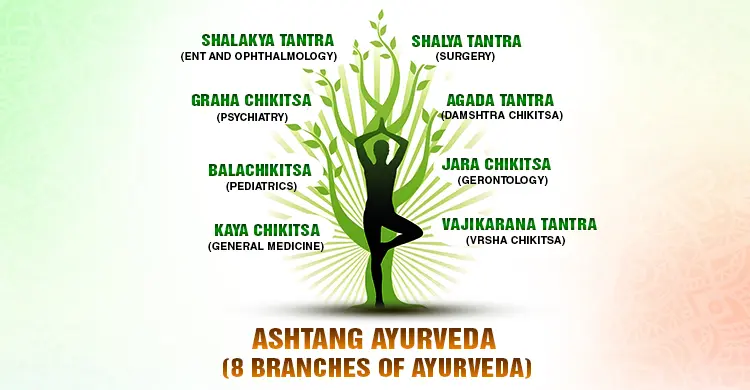Ayurveda and Panchakarma

Introduction to Ayurveda:
Ayurveda, often referred to as the "Science of Life," is an ancient holistic healing system that originated in India thousands of years ago. It is deeply rooted in the belief that health is a harmonious balance between the body, mind, and spirit. Ayurveda is based on the principles of natural healing, focusing on the unique constitution of each individual and their interactions with the environment. Ayurveda provides comprehensive guidelines for maintaining and restoring health through lifestyle modifications, dietary practices, herbal remedies, and therapeutic treatments. One of the significant components of Ayurveda is the practice of Panchakarma, a set of therapeutic procedures aimed at detoxifying and rejuvenating the body.
Understanding Ayurvedic Principles:
Ayurveda categorizes individuals into three primary doshas: Vata, Pitta, and Kapha. These doshas represent the fundamental energies that govern various physiological and psychological functions within the body. Each person has a unique combination of these doshas, which determines their physical and mental attributes, tendencies, and susceptibilities. The balance of these doshas is crucial for overall well-being, while imbalances can lead to ailments and diseases.
Ashtang Ayurveda: The Eight Branches of Traditional Healing
Ashtang Ayurveda, often referred to as "Eight Limbs of Ayurveda," is a comprehensive framework that encompasses various aspects of traditional Indian medicine. Ashtanga Ayurveda provides a structured approach to understanding and addressing health and well-being. These eight branches offer a holistic view of the human experience, covering diverse aspects of life and health maintenance.
The Eight Branches of Ashtanga Ayurveda:
Kaya Chikitsa (Internal Medicine): This branch focuses on the diagnosis, treatment, and management of various diseases and health conditions. It emphasizes balancing the doshas, eliminating toxins, and restoring harmony within the body's internal systems.
Bala Chikitsa (Pediatrics): Bala Chikitsa deals with the health of infants, children, and adolescents. It includes methods for promoting healthy growth, development, and immunity in young individuals.
Graha Chikitsa (Psychiatry): Graha Chikitsa is mainly concerned with the diseases acquired or inherited from apparently unknown causes. This branch of Ayurveda specifically deals with the diseases of mind or psychic conditions, which can be caused by super natural forces or invasion of some evil spirit.
Shalya Chikitsa (Surgery): Shalya Chikitsa involves surgical interventions for addressing various ailments, including the removal of growths, tumours, foreign objects. It emphasizes minimizing pain and promoting quick recovery.
Shalakya Chikitsa (ENT and Ophthalmology): This branch focuses on diseases and conditions affecting the upper body, including the eyes, ears, nose, teeth and throat. It provides treatments for maintaining sensory health.
Damstra Chikitsa (Toxicology): Damstra Chikitsa deals with poisons, toxins, and their effects on the body. It includes detoxification methods and treatments for managing poisoning cases.
Jara Chikitsa (Geriatrics): Jara Chikitsa focuses on the health and well-being of elderly individuals. It includes therapies to maintain vitality, manage age-related conditions, and promote longevity.
Vrisha Chikitsa (Aphrodisiacs and Reproductive Health): Vrisha Chikitsa addresses reproductive health, fertility, and sexual well-being. It includes treatments to enhance reproductive functions and manage related disorders.
Key Principles of Ashtanga Ayurveda:
Individualized Approach: Just like in traditional Ayurveda, Ashtanga Ayurveda emphasizes the uniqueness of each individual. Treatments and recommendations are tailored to a person's constitution, doshic imbalances, and specific health concerns.
Holistic View: The eight branches collectively cover physical, mental, and emotional well-being, acknowledging the interconnectedness of various aspects of life.
Preventive Care: Ashtanga Ayurveda emphasizes the importance of preventive measures to maintain health and prevent diseases. Lifestyle modifications, dietary choices, and daily routines play a vital role in disease prevention.
Balancing Doshas: Central to both Ayurveda and Ashtanga Ayurveda is the concept of balancing the three doshas—Vata, Pitta, and Kapha. Imbalances are addressed through therapies, dietary changes, and lifestyle adjustments.
Conclusion: Ashtanga Ayurveda provides a structured and holistic approach to health and well-being by addressing various facets of human life. By integrating the principles of these eight branches, individuals can navigate the complexities of their physical, mental, and emotional health. As with traditional Ayurveda, seeking guidance from qualified practitioners is essential to receive personalized advice and treatments that align with one's unique constitution and health needs.
Yoga for a Healthy Life : Nurturing Body, Mind and Spirit
Yoga, an ancient practice originating in India, offers a holistic approach to achieving and maintaining a healthy life. Beyond physical postures, yoga encompasses a comprehensive system that harmonizes the body, mind, and spirit. Its multifaceted techniques promote flexibility, strength, relaxation, and mental clarity, ultimately fostering overall well-being.
Physical Health Benefits of Yoga :
Flexibility: Yoga asanas (postures) focus on stretching various muscles and joints, enhancing flexibility and preventing stiffness. Improved flexibility reduces the risk of injuries and promotes better mobility.
Strength: Many yoga poses require the engagement of various muscle groups, building both muscular strength and endurance. This contributes to better posture and overall physical stability.
Balance: Yoga often involves poses that challenge balance, leading to increased proprioception and core strength. This is especially important for preventing falls and injuries, particularly as we age.
Pain Relief: Yoga can alleviate chronic pain conditions such as lower back pain, arthritis, and migraines by promoting circulation, improving muscle tone, and reducing tension.
Stress Reduction: Yoga incorporates breathing techniques and relaxation exercises that activate the body's parasympathetic nervous system, counteracting the stress response and promoting a sense of calm.
Mindfulness: The practice encourages mindfulness and being present in the moment. This heightened awareness fosters mental clarity, reduces racing thoughts, and enhances concentration.
Anxiety and Depression: Regular yoga practice has been shown to reduce symptoms of anxiety and depression by regulating neurotransmitters, promoting relaxation, and increasing the production of "feel-good" hormones like serotonin.
Emotional Balance: Yoga provides a safe space to explore and manage emotions. Breathing exercises and meditation can help individuals respond more mindfully to emotions, promoting emotional balance.
Connection: Yoga often emphasizes the interconnectedness of all living beings. This connection fosters a sense of unity and compassion for oneself, others, and the environment.
Self-Exploration: Through introspective practices like meditation, yoga encourages self-discovery, leading to a deeper understanding of one's thoughts, beliefs, and desires.
Personal Transformation: Yoga can catalyze personal growth by challenging limiting beliefs, encouraging self-acceptance, and fostering a positive outlook on life.
Start Slowly: If you're new to yoga, begin with gentle classes or online tutorials. Gradually increase the intensity and complexity of your practice as your body becomes more accustomed to it.
Consistency: Regular practice is key. Even a few minutes of yoga each day can yield noticeable benefits over time. Find a routine that suits your schedule and commitments.
Listen to Your Body: Pay attention to how your body responds to different poses. Avoid pushing yourself too hard, and always prioritize safety and comfort.
Breath Awareness: Incorporate breath awareness into your practice. Deep, controlled breathing can enhance relaxation and focus, creating a bridge between the physical and mental aspects of yoga.
5. Holistic Approach: Combine physical postures with mindfulness, meditation, and ethical principles (yamas and niyamas) for a well-rounded yoga experience.

